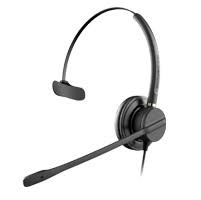
How voice recognition can ease the burden on rural medical practices
As rural doctors struggle to cope with the demand for medical services, patient wait times are growing. Options that reduce the workload of GPs need to be explored, and with our Dragon Medical Practice software, we give rural doctors a way to save themselves time on transcription – crucial hours that they can devote to their patients.
Rural doctor shortages lead to excessive waiting times
As ABC News reports, in western New South Wales and country areas of Western and South Australia, a third of people believe they have to wait too long to see the doctor. New South Wales cardiologist Dr Gerard Carroll told ABC that these increased wait times are because of a lower doctor-to-patient ratio in rural areas of Australia.
The issue isn't limited to rural GPs. In 2015 the Victorian Health Minister, Jill Hennessy, publicly revealed that some of the wait times to see specialists were excessively long, depending on the type of care needed and the hospital a patient was referred to. For example, the median waiting time at Bendigo Hospital to see an ear, nose and throat specialist was 469 days, the Sydney Morning Herald reported. One in ten patients on the elective surgery waiting list could expect to wait longer for surgery than is clinically recommended.
The challenge of increasing rural doctor numbers
In a media release last year Dr. Ewen McPhee, president of the Rural Doctors Association of Australia, said that, despite the country's oversupply of doctors overall, this was skewed towards main centres, and rural and remote communities were in desperate need of more doctors.
"There is not only an overall shortage of doctors in the bush, but more importantly a shortage of those doctors trained in advanced medical skills who can provide both procedural services (like anaesthetics, obstetrics, general surgery and emergency medicine) and non-procedural services (like advanced mental healthcare and Indigenous healthcare) in rural and remote settings," Dr. McPhee said.
The solution would appear to be increasing the number of doctors in rural Australia, bit this is not as simple to achieve as it is to say. Country practices can find it difficult to entice doctors to understaffed, isolated rural positions when there are urban jobs on offer.
Understaffing is an issue that needs to be addressed, but in the meantime the wait times for country patients remain. What immediate steps can rural doctors take to see more patients, more quickly?
Voice recognition saves time and reduces pressure on doctors
To increase the time they have to see patients, doctors can reduce the time spent on other duties. One area where there is an opportunity to streamline and increase productivity is note-taking and transcription, and technology can help you achieve this. Previously, transcription would need to be done by the doctors themselves, or by a paid manual transcription service that takes too great a toll on already stretched budgets. Dragon Medical is a budget-friendly alternative that saves time and money without compromising accuracy.
With over 60 specialties and subspecialties, our speech recognition software lets you quickly and accurately input patient data to your records, reducing the time you spend on notes and away from patients. Dragon can be fully integrated into your medical records software application, and we offer technical support and on-site or remote training to make sure you make the most of the best speech recognition software available.
By improving the efficiency of processes like transcription and record keeping, doctors give themselves more time to focus on the parts of the job that can't be cut short – time spent face-to-face with patients. Let Dragon Medical take some of the load off you so you can focus more on the people who need your attention most.






